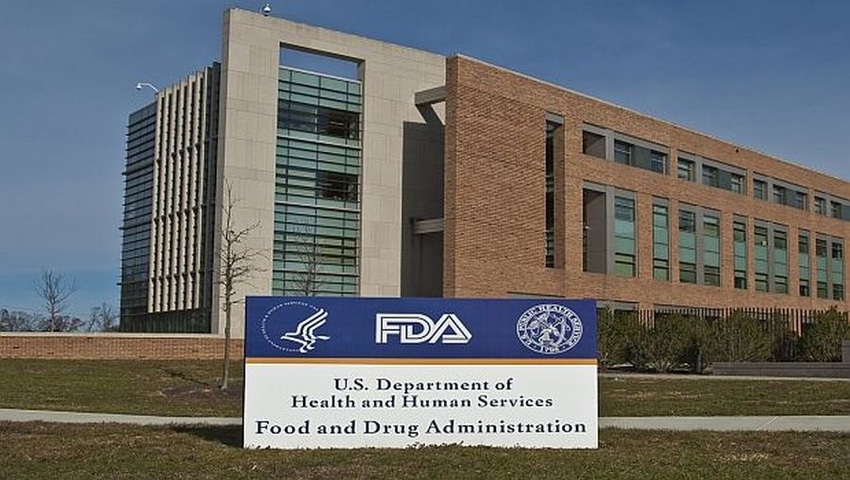Supplement Industry, Consumer Advocates Mull Daunting ODI List Facing FDA
The task before the US$41 billion industry: dig up advertisements, marketing brochures and other evidence to establish that certain dietary ingredients were marketed before Oct. 15, 1994.

FDA officials overseeing the tens of thousands of dietary supplements on the U.S. market have embarked on an ambitious and challenging journey to craft an authoritative list of ingredients exempt from a safety-related notification requirement in the law.
On Tuesday, Oct. 3 in College Park, Maryland—home to FDA’s Center for Food Safety and Applied Nutrition (CFSAN), including the 26-person Office of Dietary Supplement Programs (ODSP)—FDA officials hosted an all-day meeting with consumer advocates, industry representatives and other stakeholders to discuss the development of such a list.
The task before the US$41 billion industry: dig up advertisements, marketing brochures, scientific literature, internal company documents and other evidence to establish that certain dietary ingredients were marketed before Oct. 15, 1994, the “grandfathering" date specified in the Dietary Supplement Health and Education Act of 1994 (DSHEA).
Such old dietary ingredients (ODIs)—otherwise described by FDA as pre-DSHEA ingredients—are distinguishable from new dietary ingredients (NDIs). The latter cannot be legally sold in interstate commerce until FDA receives a 75-day premarket notification demonstrating the new ingredient is reasonably expected to be safe.
The purpose of Tuesday’s meeting was twofold. FDA sought to obtain feedback from various stakeholders on the evidence necessary to show an ingredient was marketed before the above date, and discuss the process that should be used to develop a pre-DSHEA list of ingredients, such as the potential role of an expert panel.
The challenge associated with FDA’s undertaking is compounded by the lapse of time.
Records from a quarter-century ago, industry sources suggested, may not exist anymore or could be difficult to access. Loren Israelsen, who was involved in negotiations during the passage of DSHEA and heads the United Natural Products Alliance (UNPA), reminisced about the technology in 1994, highlighting products in vogue at the time like a Nintendo Game Boy and Macintosh computer.
Israelsen brought to the FDA meeting a floppy disk with files on ODIs, but he said UNPA didn’t have a computer in the office to access the information.
“The passage of time has changed technology, and it also has changed our ability to access the literal information that was captured and held" beyond published lists of old dietary ingredients, he observed during the morning’s expert panel on the evidence needed to demonstrate an ingredient is old.
Experts at the meeting nonetheless referenced a mountain of documents as potential evidence, or at least a starting point to examine ingredient candidates: lists of ODIs compiled by trade associations; shipping documents from importers; books on botanicals; and food ingredients that FDA has recognized as safe, among other FDA and external documents.
Some industry veterans have questioned the prudence of crafting a list 23 years after the passage of DSHEA. The American Herbal Products Association (AHPA), for example, views FDA’s efforts (as described in its 2016 NDI draft guidance) as unlikely to succeed, its president Michael McGuffin said during the meeting.
“AHPA and its members would need to see a significant shift in the agency’s thinking if we are to embrace the current effort," said McGuffin, who pointed out companies selling only pre-DSHEA ingredients are not required under the law to produce documentation that an ingredient was marketed before October 1994.
“This does not mean that supplement companies that market only ODIs are off the hook with regard to safety," cautioned McGuffin, who added, “The NDI provision of the law only establishes that old dietary ingredients are old."
McGuffin and others suggested FDA’s interpretation of the evidence necessary to show an ingredient was marketed before October 1994 is too narrow.
In a press release issued following the meeting, AHPA recommended, among other things, that FDA consider lists submitted by the supplement industry in the years following the passage of DSHEA, such as AHPA’s “Herbs of Commerce," and “abandon any quest for absolute proof of pre-DSHEA marketing and move toward exercising enforcement discretion for dietary ingredients that are acknowledged as very likely to have been marketed in the U.S. as of October 15, 1994."
McGuffin questioned whether FDA’s resources might be better spent doing something other than developing a pre-DSHEA list, such as by improving an understanding of the agency’s 10-year-old cGMPs (current good manufacturing practices) applicable to dietary supplement manufacturers.
During the FDA meeting, Duffy MacKay, senior vice president of scientific and regulatory affairs with the Council for Responsible Nutrition (CRN), acknowledged the challenges in developing an authoritative list of ODIs 23 years after passage of DSHEA.
“Here we are October 3, 2017, 20-plus years later, and I would argue we are starting from scratch," he said.
MacKay added, “This exercise alone, especially if we continue to see the interpretation of the evidence constrained and limited, and specificity required…is not likely to result in the desired certainty around a significant number of common dietary ingredients that common sense would dictate have been used either in food for a long time or actually in dietary supplement" products.
Crafting a list of pre-DSHEA ingredients, MacKay suggested, is not an efficient use of resources. Instead, he recommended FDA develop a comprehensive list of all dietary ingredients not subject to a notification. Such a list, he said, would include pre-DSHEA ingredients, NDI notifications (NDINs) submitted to FDA without any objections, and ingredients already in the food supply.
The latter list is relevant because NDIs are exempt from the notification requirement if—as DSHEA states—a dietary supplement “contains only dietary ingredients which have been present in the food supply as an article used for food in a form in which the food has not been chemically altered".
“If we get this all done, and we do it right," MacKay declared, “the agency [and] the industry can focus our resources on the more important stuff: GMPs, real safety reviews, getting those NDIs filed. If you create certainty around the low-hanging fruit, we can move on."
Moving forward, though, will first require FDA to consider diverse views and complex issues, such as the manufacturing practices to produce a botanical supplement in the early 1990s.
Enter Pieter Cohen, M.D., of Harvard Medical School, whose research has highlighted that the constituents of a botanical in a finished dietary supplement product—such as monacolin K in red yeast rice (a chemical that researchers said is identical to the active ingredient in the cholesterol-lowering drug lovastatin) or the active chemical (yohimbine) in the bark of yohimbe—can vary widely from one brand to another, sometimes exceeding levels found in a pharmaceutical drug.
“If we don’t know how the yohimbe bark extract is being processed to get into the supplement, we would have absolutely no idea of" a product’s pharmacological and safety effects, Cohen said during the meeting hosted by FDA.
Consequently, he said it was important to know the manufacturing specifications of yohimbe bark when it was sold before October 1994 and replicate such manufacturing processes in selling pre-DSHEA ingredients. The physician, nonetheless, acknowledged such data may no longer be available. He suggested a compromise—using monographs from the U.S. Pharmacopeial Convention (USP)—to ensure pre-DSHEA ingredients are not actually a new drug.
Concerns on the issue of safety boiled over in the afternoon session meant to address the process FDA should undertake in compiling a pre-DSHEA ingredient list.
Laura MacCleery, director of regulatory affairs for the Center for Science in the Public Interest (CSPI), objected to the use of the term “safe harbor" in association with any ODI list.
“Even though the notion of safety is not specifically part of a ‘grandfather’ clause, it is the elephant in the room," she said at the FDA meeting. “It is always the consideration from the consumer advocacy perspective, and if the system wasn’t broken, if we had a system in which [there was] rapid response to dangerous substances—either under DSHEA’s provision for removal of imminent hazards to public health or under the reasonable safety standard in the form sold, then we wouldn’t be as worried about a system that provides a so-called safe harbor or grandfather list of pre-DSHEA ingredients."
Stephanie Scarmo, Ph.D., an officer with health care products project at The Pew Charitable Trusts, also noted the safety issue during the FDA meeting.
She said it would be important for the listing process to consider any changes to identity from the pre-DSHEA form, as well as conditions of use. She added FDA should take a conservative approach to creating a pre-DSHEA list, and the agency should have discretion to remove ingredients from any such list due to concerns about safety or documentation.
Daniel Fabricant, Ph.D., executive director and CEO of the Natural Products Association (NPA) and former director of FDA’s Division of Dietary Supplement Programs, noted FDA has ample authority to take enforcement action, including removing an ingredient from the market, if there is a safety concern.
As for how to go about listing ODIs, Fabricant said the process is not directed by any specific statute, so the agency is operating on regulatory flexibility. He stated the important aspect is submission of independent, verifiable evidence showing an ingredient was marketed as a supplement before DSHEA.
“It’s less about the process and more about the data [showing an ingredient was on the market before DSHEA passed]," he said.
Jay Sirois, Ph.D., senior director of regulatory and scientific affairs for the Consumer Healthcare Products Association (CHPA), reviewed how FDA could use an advisory panel using lessons learned from the panel used in the agency’s OTC (over-the-counter) drug review, which started in 1972. Unlike the OTC panel’s closed-door meetings with no consumer representation, an ODI review panel would be comprised of not only both agency and industry representatives, but also non-voting participation from consumer advocacy groups. He recommended the process be open and transparent, but should also respect confidentiality as necessary.
Scarmo noted whether alone or with an advisory committee, the process should entail a fixed time frame.
“Creating this list of pre-DSHEA ingredients may be a worthwhile exercise for FDA and industry, but it will take compromise on the part of all stakeholders," Scarmo said. “If this can’t be achieved and the process diverts resources away from other important public health activities, such as FDA’s ability to go after tainted supplements, then FDA should revisit whether this exercise is worthwhile."
Vasilios “Bill" Frankos, Ph.D., a former FDA dietary supplement director who now serves as Herbalife Nutrition’s senior corporate advisor of product science, safety and compliance, weighed in with his suggestions for compiling a pre-DSHEA list during the Q&A portion of the meeting.
Frankos suggested the process can be started quickly by first addressing the “easy stuff"—approved or non-objected ingredients, including GRAS (generally recognized as safe) ingredients, food additives, flavors and spices, as well as the half of the industry list that most stakeholders would agree on as pre-DSHEA. Then, he recommended dealing with a smaller list of difficult ingredients that will take more time and compromise.
The diversity of views expressed at the meeting and complexity of the issues highlighted that FDA’s task in the months ahead won’t be easy. In spite of the challenges ahead, FDA’s top dietary supplement official—Steven Tave—underscored the process would be an inclusive and transparent one.
“The same standards … that inform our determination of whether one ingredient was marketed before October 15, 1994 should apply to all ingredients," he proclaimed at the beginning of the meeting.
Editor’s Note: Join Informa and the Council for Responsible Nutrition (CRN) for an expert webinar Thursday, Oct. 5 at 2 ET to discuss the Oct. 3 meeting hosted by FDA and the initiative to develop a pre-DSHEA list.
About the Author(s)
You May Also Like








.png?width=800&auto=webp&quality=80&disable=upscale)